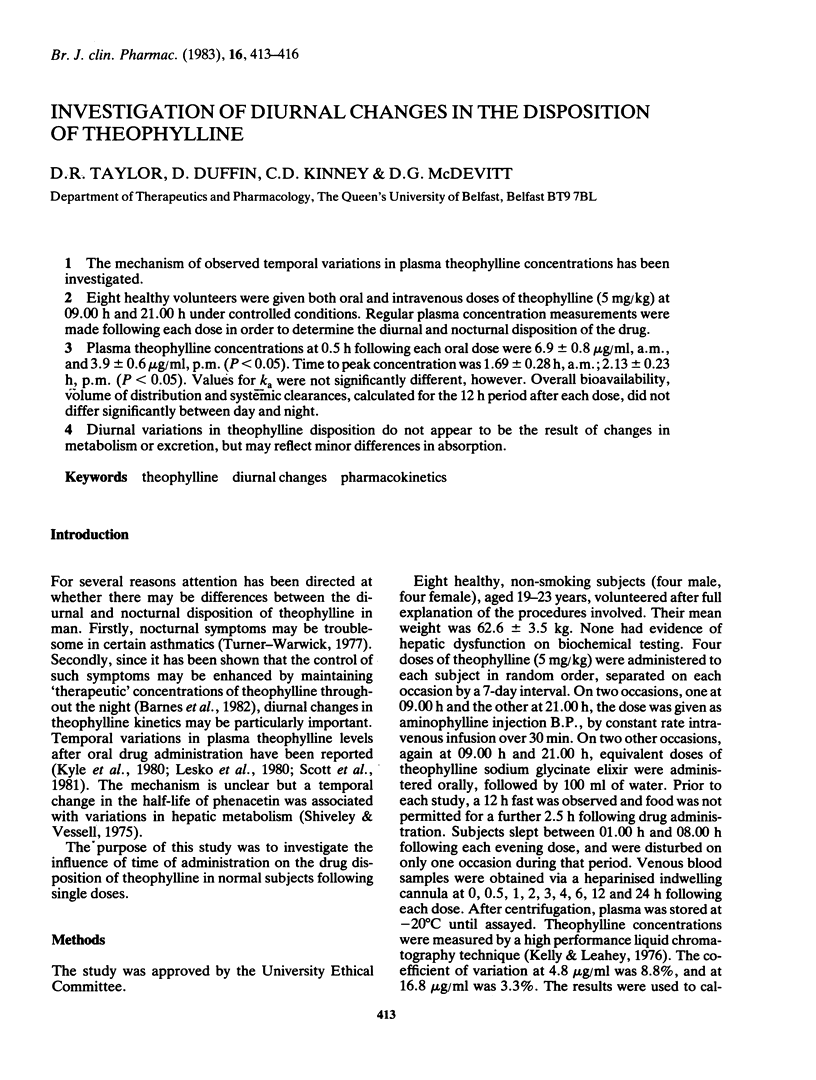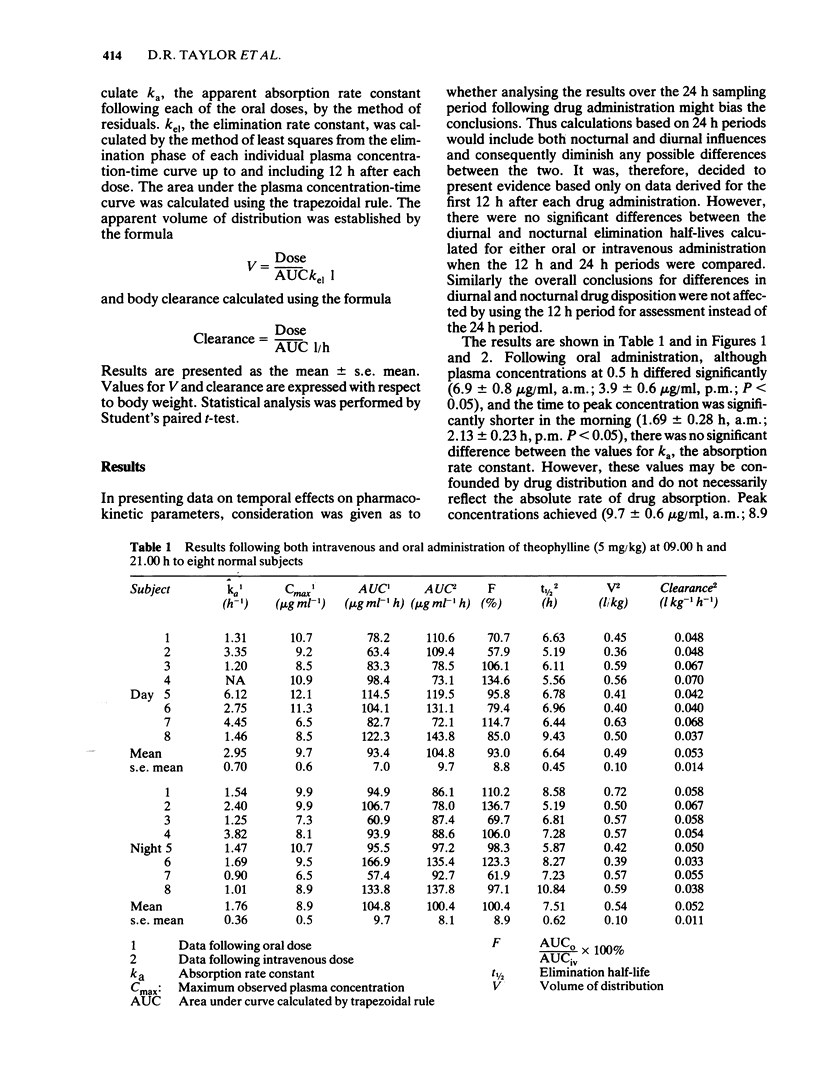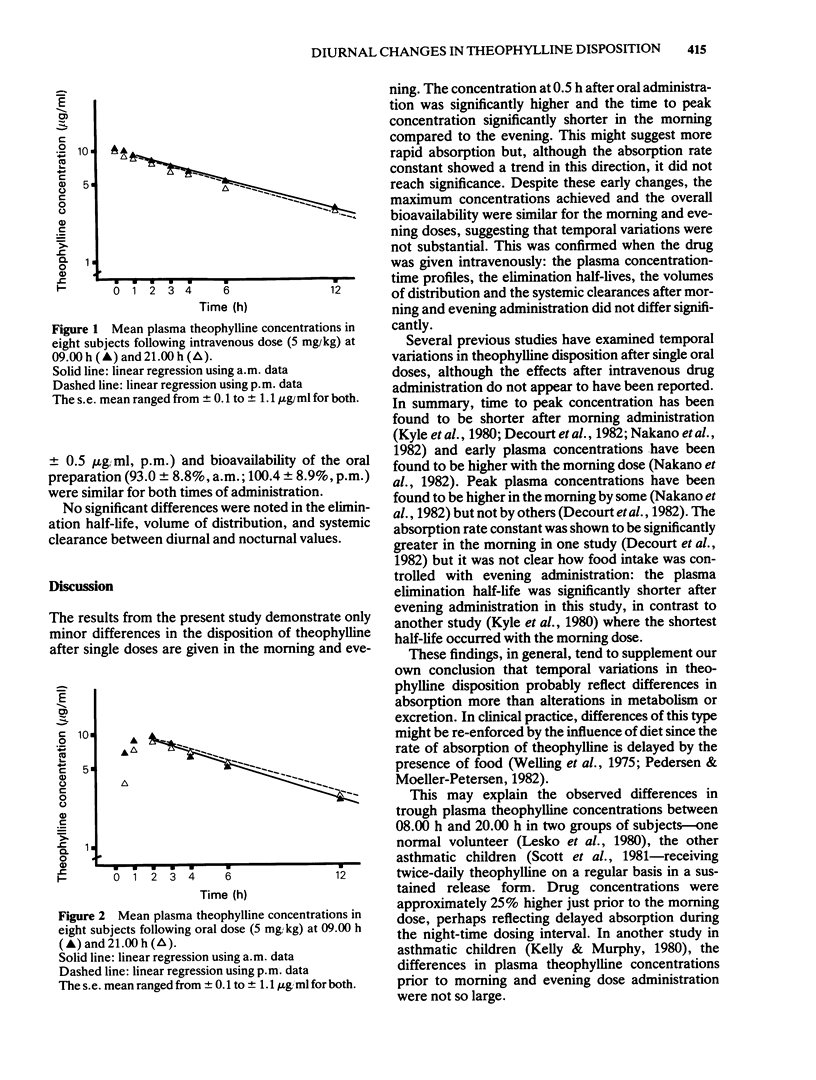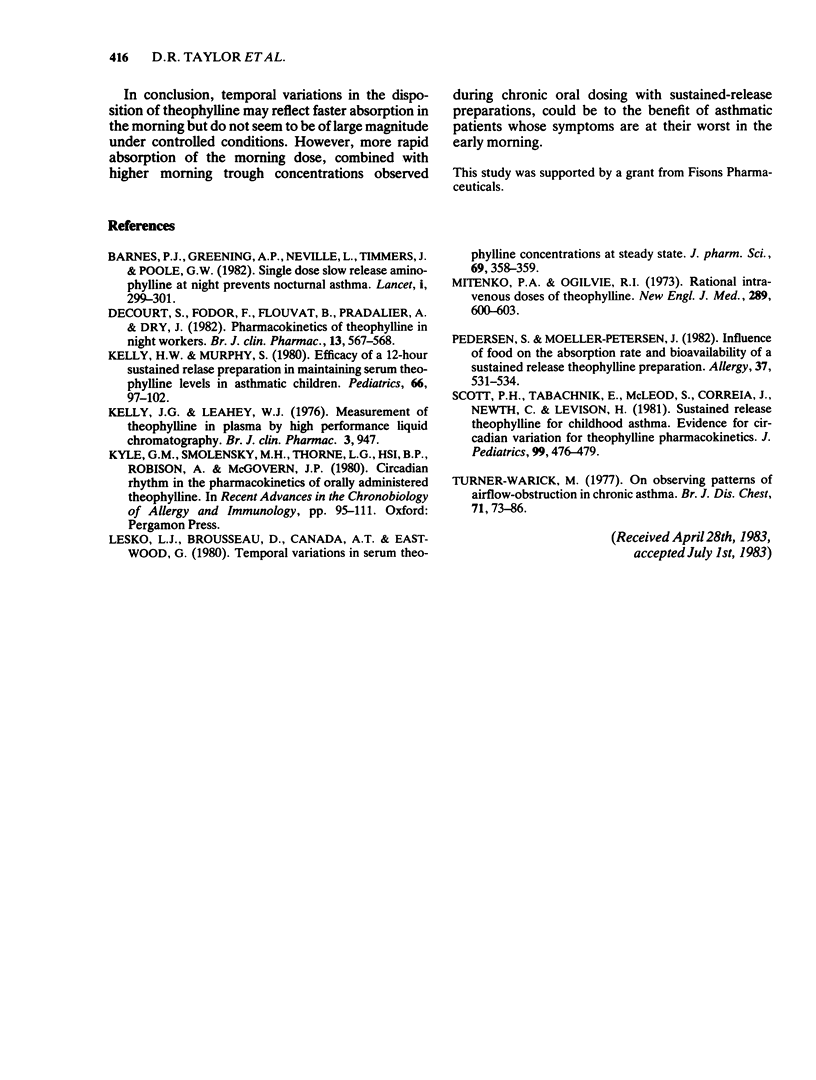Abstract
The mechanism of observed temporal variations in plasma theophylline concentrations has been investigated. Eight healthy volunteers were given both oral and intravenous doses of theophylline (5 mg/kg) at 09.00 h and 21.00 h under controlled conditions. Regular plasma concentration measurements were made following each dose in order to determine the diurnal and nocturnal disposition of the drug. Plasma theophylline concentrations at 0.5 h following each oral dose were 6.9 +/- 0.8 micrograms/ml, a.m., and 3.9 +/- 0.6 microgram/ml, p.m. (P less than 0.05). Time to peak concentration was 1.69 +/- 0.28 h, a.m.; 2.13 +/- 0.23 h, p.m. (P less than 0.05). Values for ka were not significantly different, however. Overall bioavailability, volume of distribution and systemic clearances, calculated for the 12 h period after each dose, did not differ significantly between day and night. Diurnal variations in theophylline disposition do not appear to be the result of changes in metabolism or excretion, but may reflect minor differences in absorption.
Full text
PDF



Selected References
These references are in PubMed. This may not be the complete list of references from this article.
- Barnes P. J., Greening A. P., Neville L., Timmers J., Poole G. W. Single-dose slow-release aminophylline at night prevents nocturnal asthma. Lancet. 1982 Feb 6;1(8267):299–301. doi: 10.1016/s0140-6736(82)91566-5. [DOI] [PubMed] [Google Scholar]
- Decourt S., Fodor F., Flouvat B., Pradalier A., Dry J. Pharmacokinetics of theophylline in night-workers. Br J Clin Pharmacol. 1982 Apr;13(4):567–569. [PMC free article] [PubMed] [Google Scholar]
- Kelly H. W., Murphy S. Efficacy of a 12-hour sustained-release preparation in maintaining therapeutic serum theophylline levels in asthmatic children. Pediatrics. 1980 Jul;66(1):97–102. [PubMed] [Google Scholar]
- Kelly J. G., Leahey W. J. Measurement of theophylline in plasma by high performance liquid chromatography. Br J Clin Pharmacol. 1976 Oct;3(5):947–948. doi: 10.1111/j.1365-2125.1976.tb00657.x. [DOI] [PMC free article] [PubMed] [Google Scholar]
- Lesko L. J., Brousseau D., Canada A. T., Eastwood G. Temporal variations in trough serum theophylline concentrations at steady state. J Pharm Sci. 1980 Mar;69(3):358–359. doi: 10.1002/jps.2600690332. [DOI] [PubMed] [Google Scholar]
- Mitenko P. A., Ogilvie R. I. Rational intravenous doses of theophylline. N Engl J Med. 1973 Sep 20;289(12):600–603. doi: 10.1056/NEJM197309202891202. [DOI] [PubMed] [Google Scholar]
- Pedersen S., Moeller-Petersen J. Influence of food on the absorption rate and bioavailability of a sustained release theophylline preparation. Allergy. 1982 Oct;37(7):531–534. doi: 10.1111/j.1398-9995.1982.tb02336.x. [DOI] [PubMed] [Google Scholar]
- Scott P. H., Tabachnik E., MacLeod S., Correia J., Newth C., Levison H. Sustained-release theophylline for childhood asthma: evidence for circadian variation of theophylline pharmacokinetics. J Pediatr. 1981 Sep;99(3):476–479. doi: 10.1016/s0022-3476(81)80354-x. [DOI] [PubMed] [Google Scholar]
- Turner-Warwick M. On observing patterns of airflow obstruction in chronic asthma. Br J Dis Chest. 1977 Apr;71(2):73–86. doi: 10.1016/0007-0971(77)90086-9. [DOI] [PubMed] [Google Scholar]


